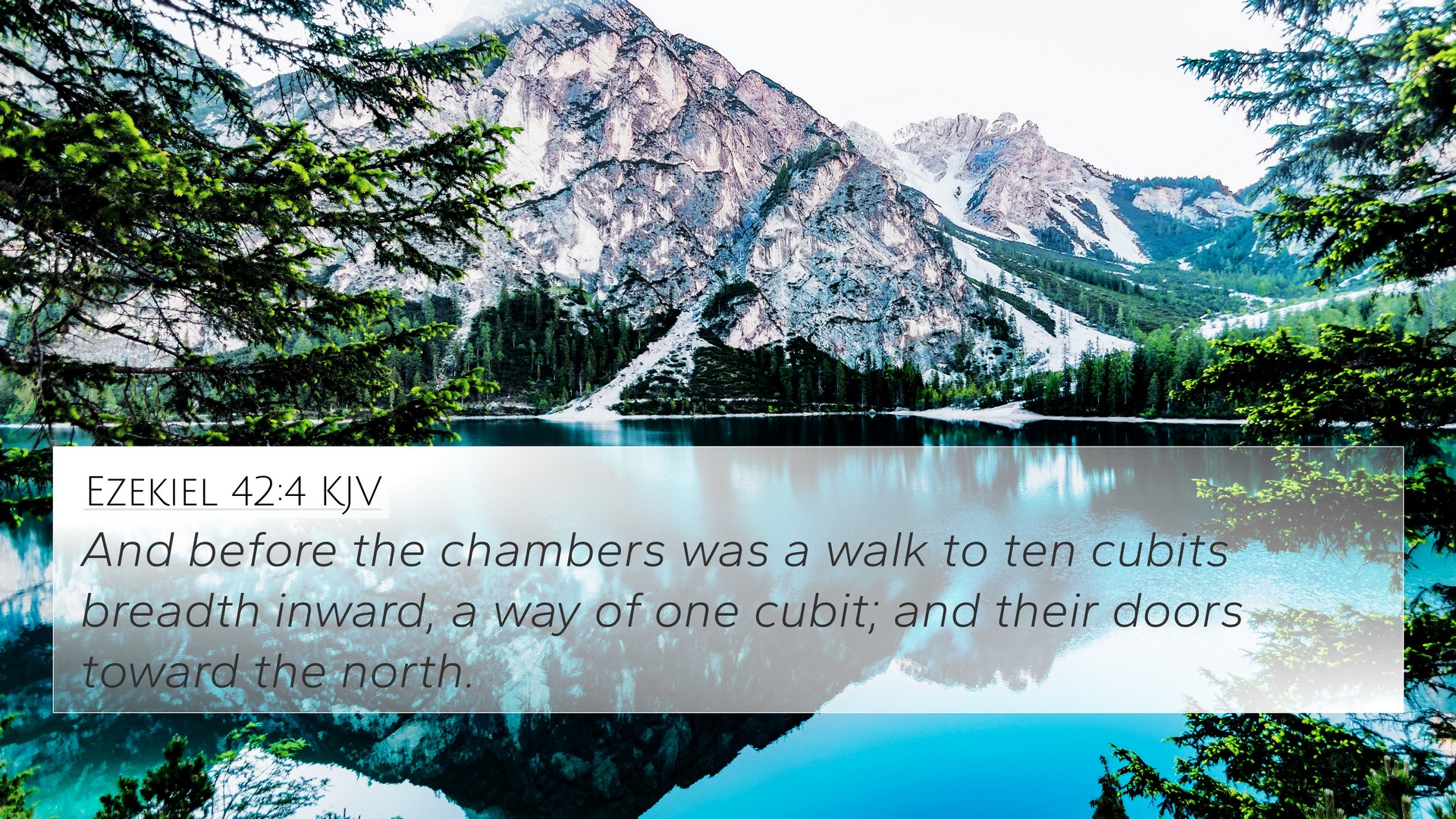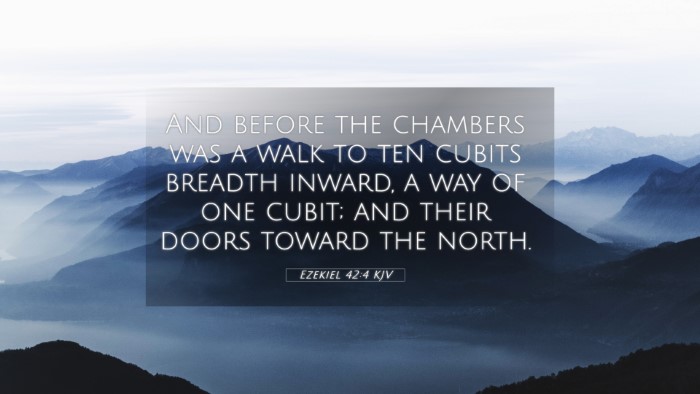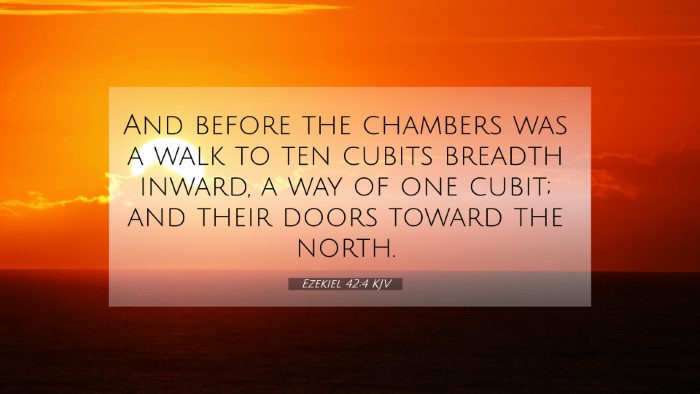Ezekiel 42:4 - Meaning and Interpretation
Ezekiel 42:4 reads, “And before the chambers was a walk of ten cubits broad inward, a way of one cubit; and their doors toward the north.” This verse is part of Ezekiel's vision regarding the measurement and layout of the temple, often referred to as the “temple vision.” It plays a significant role in demonstrating not only the physical design of the temple but also its spiritual implications.
Summary of Biblical Context
The Book of Ezekiel is a prophetic book that captures the visions and messages of the prophet Ezekiel during the Babylonian exile. This particular passage describes detailed measurements and architectural elements of the future temple. Understanding these descriptions requires an exploration of the theological and symbolic significance they hold.
Detailed Analysis and Insights
Drawing insights from public domain commentaries, we can understand this verse in a multi-faceted manner:
-
Matthew Henry's Commentary:
Henry notes the meticulous details provided in Ezekiel’s vision, emphasizing the divine instruction behind the temple's layout. This detailed description highlights God's order and the reverence that should accompany worship. The “walk of ten cubits broad” symbolizes the space set apart for God's presence, implying the need for preparation before approaching the sacred.
-
Albert Barnes’ Notes:
Barnes reflects on the significance of the “doors” mentioned in the verse. The orientation of doors can symbolize access to God’s presence. The specific mention of the direction, north, may indicate the intended focus of worship and the importance of approaching God in the right manner.
-
Adam Clarke's Commentary:
Clarke draws parallels between the temple structure and its representation of God’s covenant with Israel. He highlights that the measurements serve to remind the faithful of God’s promises and their relationship with Him. The design is seen as a foreshadowing of the ultimate fulfillment found in Christ, where believers would have direct access to God.
Cross-References and Thematic Connections
The following Bible verses exhibit significant parallels and thematic connections to Ezekiel 42:4, enhancing our understanding through cross-referencing biblical texts:
- 1 Kings 6:2 - Discusses the measurements and design of Solomon’s temple.
- Isaiah 54:2 - Encourages expanding one’s dwelling, symbolizing hope and preparation.
- Hebrews 9:1-5 - Connects the earthly tabernacle with the heavenly reality concerning worship.
- Revelation 21:10-12 - Describes the heavenly city that can be seen as the ultimate temple where God's presence dwells.
- Exodus 25:40 - Highlights the importance of following God’s instructions carefully when building the tabernacle.
- Matthew 27:51 - Illustrates the tearing of the temple veil symbolizing open access to God.
- John 4:21-24 - Jesus speaks of true worship in spirit and truth, connecting to the heart of worship vs. physical locations.
Understanding the Spiritual and Theological Implications
The careful design described in Ezekiel 42:4 is more than just architectural detail; it serves as a testament to God’s desire for His people to approach Him with reverence and integrity. Each measurement and space holds symbolic significance, indicative of God’s holiness and the order within worship.
Tools for Further Cross-Referencing
For those interested in deepening their study, various tools for Bible cross-referencing can aid in discovering connections between verses:
- Bible Concordance: A useful resource to identify keywords and their occurrences throughout Scripture.
- Bible Cross-Reference Guide: Helpful for tracking thematic or doctrinal parallels across different books
- Cross-Reference Bible Study Techniques: Methods to systematically explore links between passages.
Application and Reflection
This verse and its teachings invite believers to reflect on their approach to worship and their understanding of God's holiness. Through the study of Ezekiel’s temple vision, believers can find renewal in their worship practices, recognizing the profound relationship between the physical and the spiritual.
Conclusion
Ezekiel 42:4, while presenting a specific structural description, resonates with themes of God’s holiness, the ordered approach to worship, and the importance of recognizing divine presence. By engaging with this verse and others that relate to it, we gain a broader understanding of the narrative of Scripture and our relationship with God.





